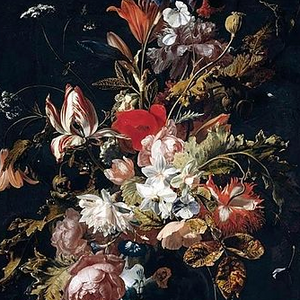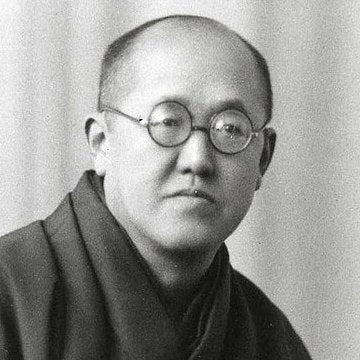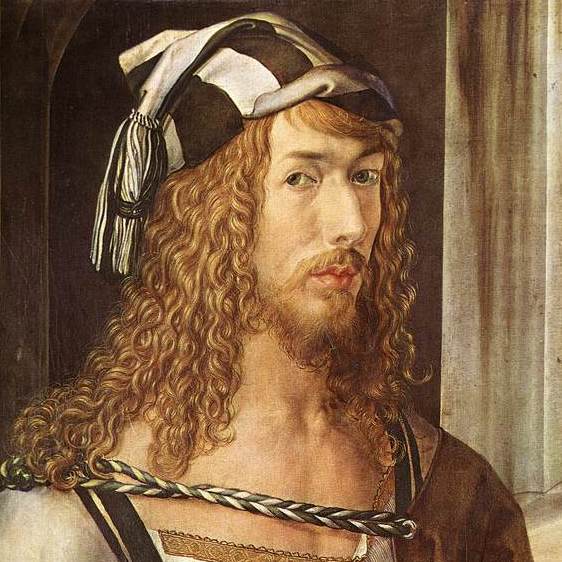 Nell Gwyn (1650-1687) (1670)
Nell Gwyn (1650-1687) (1670)Nell Gwyn (1650-1687) (1670)
Simon Verelst
Prix normal 19,00€+Prix à l'unité par

Simon Verelst
Simon Verelst : le murmureur de fleurs du baroque
Dans le monde éblouissant du baroque, où les perruques étaient à la hauteur des ambitions de l'aristocratie et où la scène artistique était dominée par des contrastes dramatiques de lumière et d'obscurité, s'épanouissait un artiste dont l'œuvre était aussi délicate et parfumée que les fleurs qu'il peignait. Simon Verelst, un nom peut-être moins connu que Rembrandt ou Rubens, mais dont les chefs-d'œuvre floraux captivent les sens et conquièrent les cœurs.
Simon Verelst est né en 1644 à La Haye, une ville qui était déjà un melting-pot d'art et de culture. Les Pays-Bas du XVIIe siècle étaient un foyer de créativité et Verelst a grandi dans une famille de peintres, ce qui a presque prédéterminé sa carrière artistique. Son père, Pieter Hermansz Verelst, était un peintre respecté, et il était probablement inévitable que Simon prenne un pinceau avant même de savoir marcher.
Verelst s'est spécialisé dans les natures mortes de fleurs, un genre particulièrement populaire pendant l'âge d'or de la peinture hollandaise. Mais alors que beaucoup de ses contemporains se limitaient à représenter des fleurs dans des vases, Verelst donnait à ses œuvres une vivacité presque surnaturelle. Ses fleurs semblaient non seulement fleurir mais respirer, comme si elles pouvaient sortir de la toile à tout moment pour envelopper le spectateur de leur parfum.
En 1669, à l'âge de 25 ans, Verelst traverse la Manche et s'installe à Londres. La capitale anglaise était alors un centre artistique émergent et Verelst trouva rapidement grâce auprès de l'aristocratie britannique. Ses natures mortes de fleurs sont devenues des objets de collection recherchés et on lui a donné le surnom flatteur de « peintre de fleurs ».
Mais Verelst n’était pas seulement un maître des fleurs. Il était également un portraitiste doué et sa capacité à saisir les subtilités de la physionomie humaine lui a valu de nombreuses commandes de la part de riches mécènes. Ses portraits étaient aussi détaillés que ses peintures de fleurs, et on raconte qu’il peignait même les pores de la peau avec la précision d’un chirurgien.
Malgré son succès, Verelst était un personnage excentrique. Il était connu pour ses vêtements extravagants et son penchant pour les fêtes somptueuses, où il divertissait ses invités avec des histoires du monde de l'art. Mais derrière cette façade éblouissante se cachait un homme en proie à des démons intérieurs. On raconte que vers la fin de sa vie, Verelst souffrait de délires et se considérait comme le roi des peintres – une idée qui n’était peut-être pas si farfelue compte tenu de son talent.
Simon Verelst est décédé en 1710, mais son héritage perdure dans ses œuvres. Ses natures mortes de fleurs sont aujourd'hui exposées dans certains des musées les plus prestigieux du monde, notamment la National Gallery de Londres et le Rijksmuseum d'Amsterdam. Ses peintures témoignent de son extraordinaire capacité à capturer la beauté de la nature sur toile, et elles nous rappellent que l’art peut non seulement plaire à l’œil, mais aussi toucher l’âme.
Dans un monde souvent caractérisé par le bruit et le rythme effréné, les œuvres de Simon Verelst offrent une oasis de calme et d’émerveillement. Ils nous invitent à nous arrêter un instant pour admirer la beauté éphémère de la nature – une invitation que nous sommes plus que ravis d’accepter. Ainsi, Simon Verelst, le chuchoteur de fleurs du baroque, reste un artiste dont l’œuvre continue de nous captiver des siècles après sa mort.








